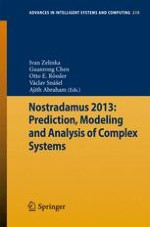Prediction of behavior of the dynamical systems, analysis and modeling of its structure is vitally important problem in engineering, economy and science today. Examples of such systems can be seen
in the world around us and of course in almost every scientific discipline including such “exotic” domains like the earth’s atmosphere, turbulent fluids, economies (exchange rate and stock markets),
population growth, physics (control of plasma), information flow in social networks and its dynamics, chemistry and complex networks. To understand such dynamics and to use it in research or industrial
applications, it is important to create its models. For this purpose there is rich spectra of methods, from classical like ARMA models or Box Jenkins method to such modern ones like evolutionary
computation, neural networks, fuzzy logic, fractal geometry, deterministic chaos and more. This proceeding book is a collection of the accepted papers to conference Nostradamus that has been held in Ostrava, Czech Republic. Proceeding also comprises of outstanding keynote speeches by distinguished guest speakers: Guanrong Chen (Hong Kong), Miguel A. F. Sanjuan (Spain), Gennady Leonov and Nikolay Kuznetsov (Russia), Petr Škoda (Czech Republic).
The main aim of the conference is to create periodical possibility for students, academics and researchers to exchange their ideas and novel methods. This conference will establish forum for
presentation and discussion of recent trends in the area of applications of various predictive methods for researchers, students and academics.
